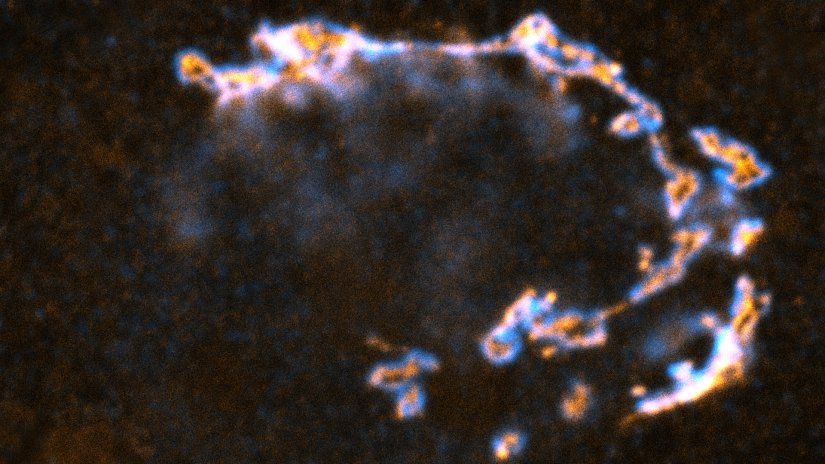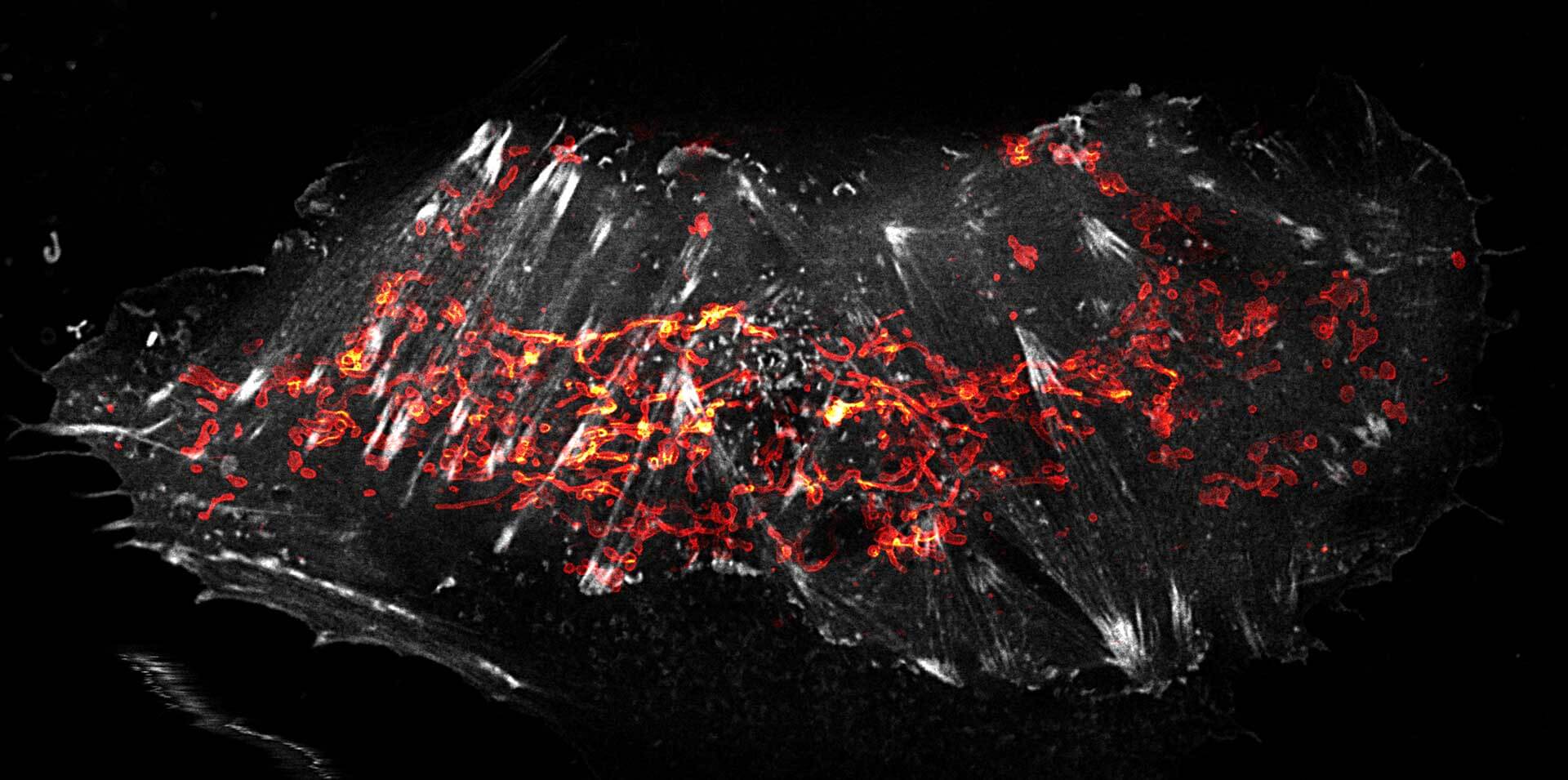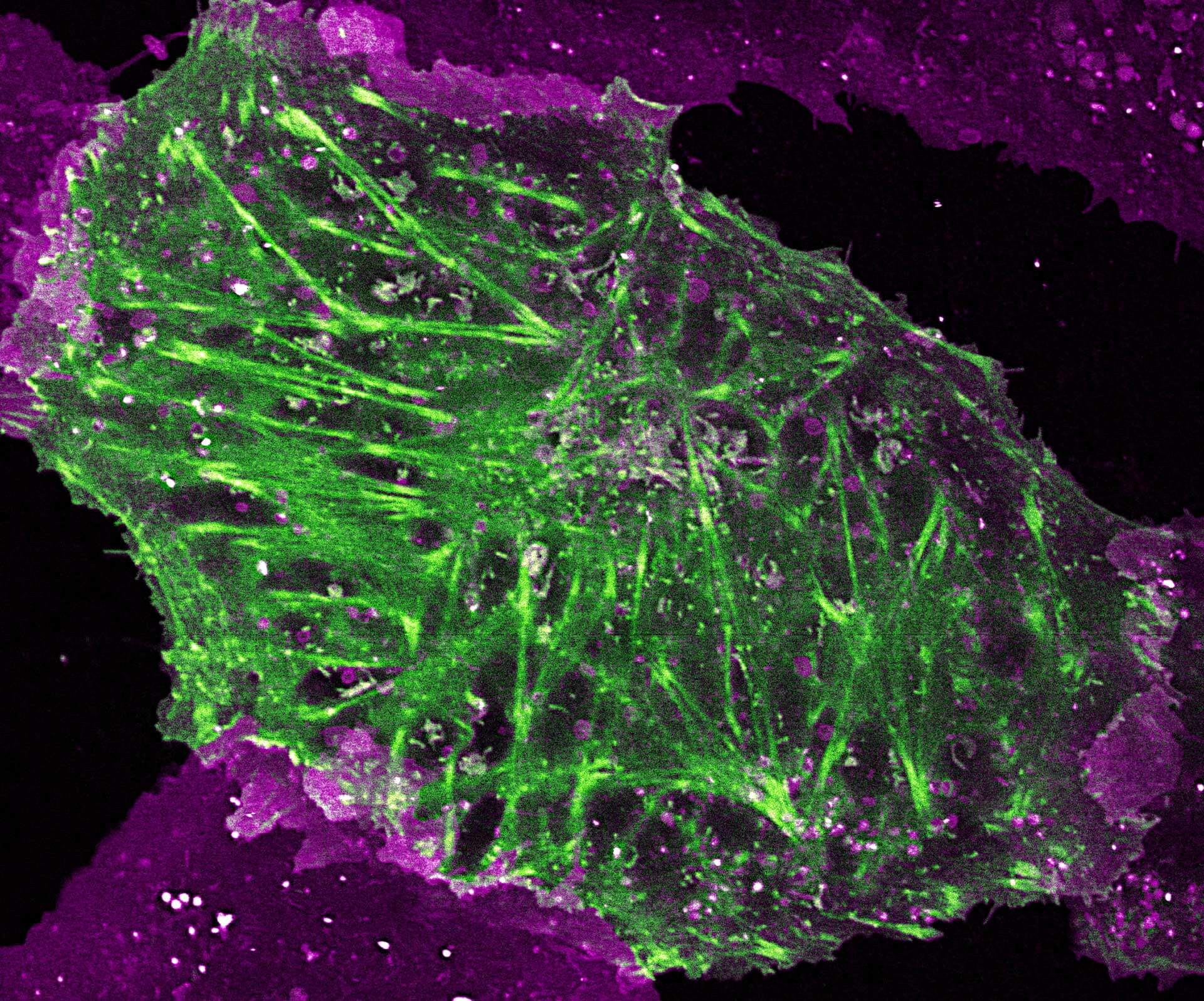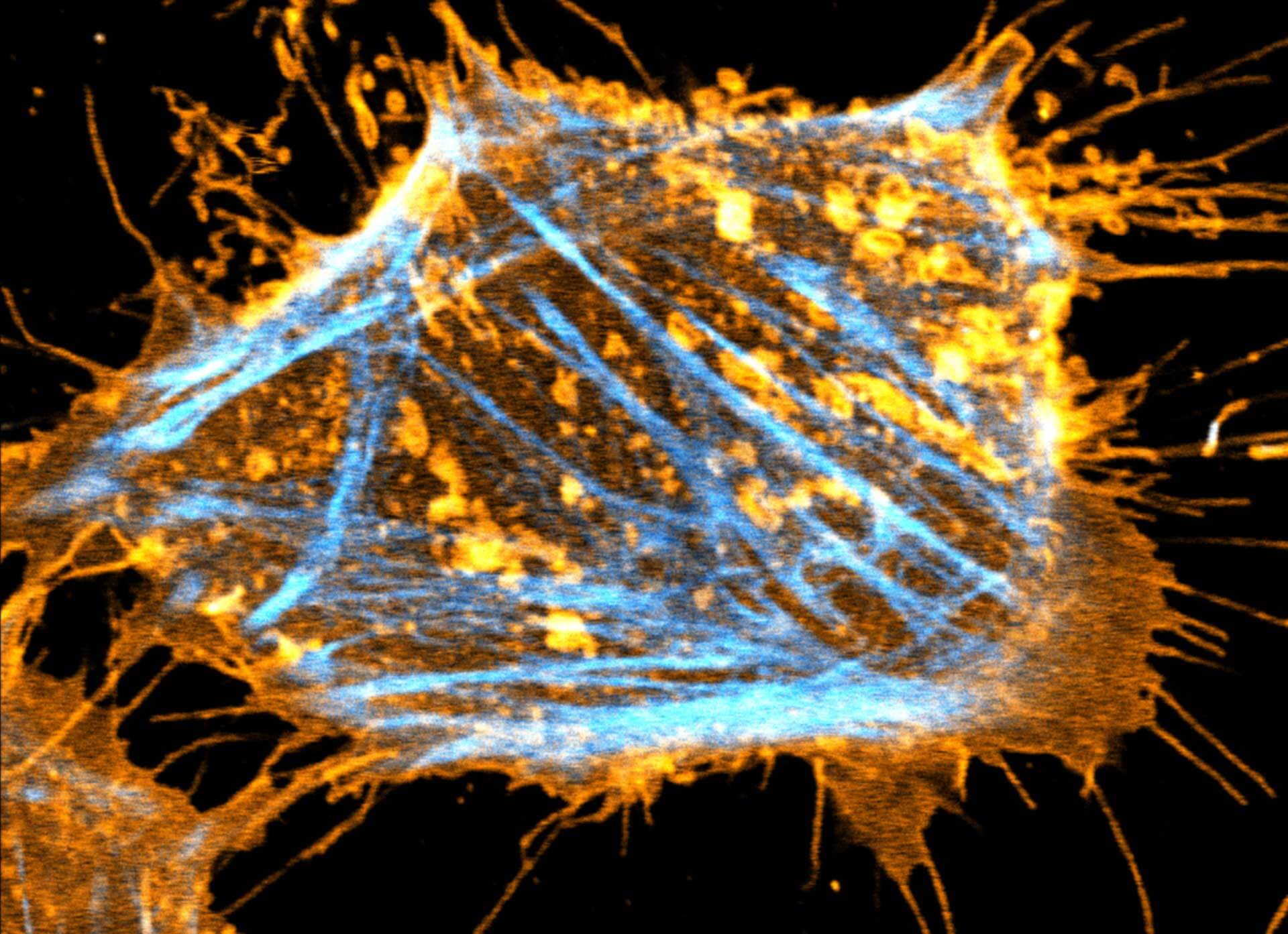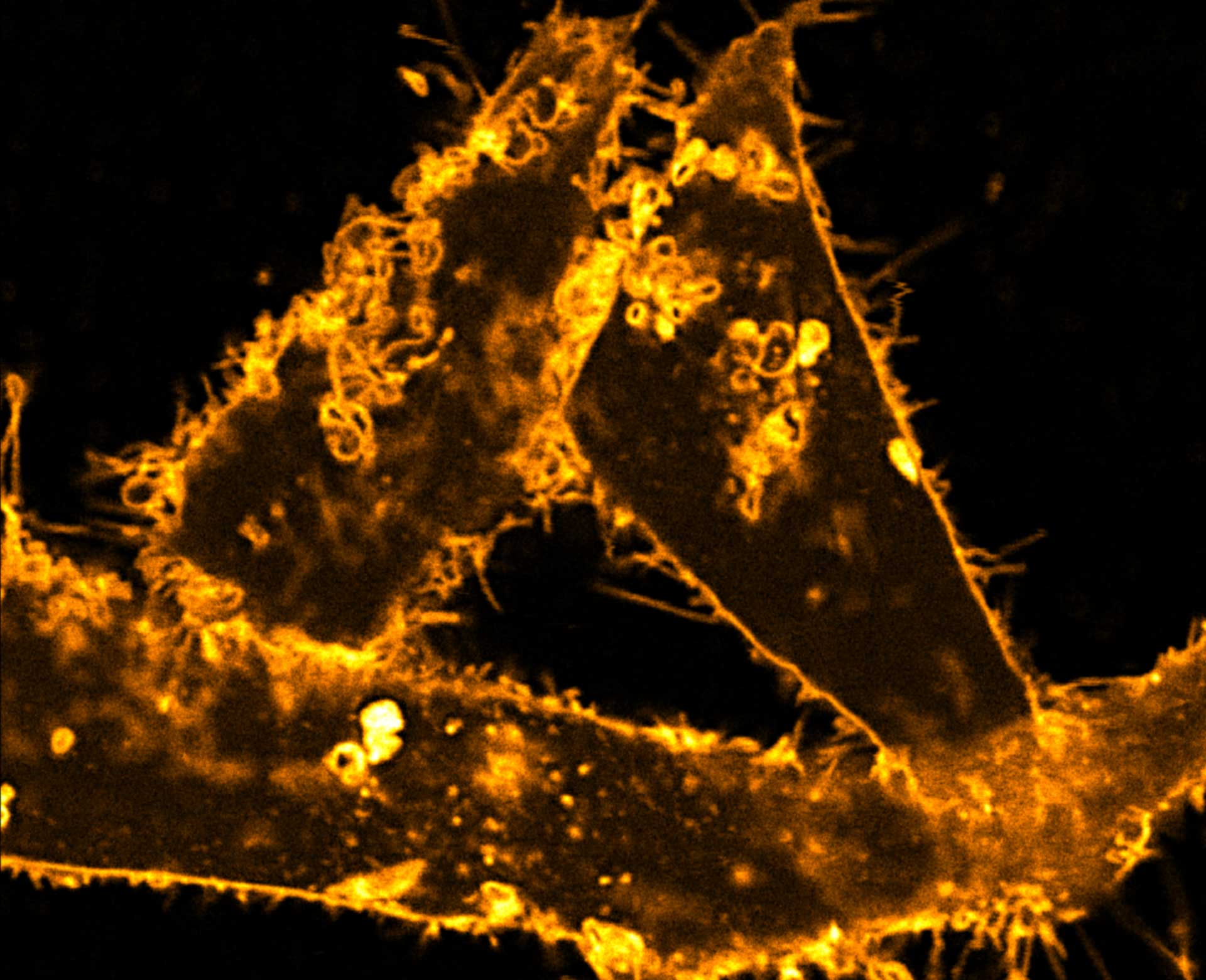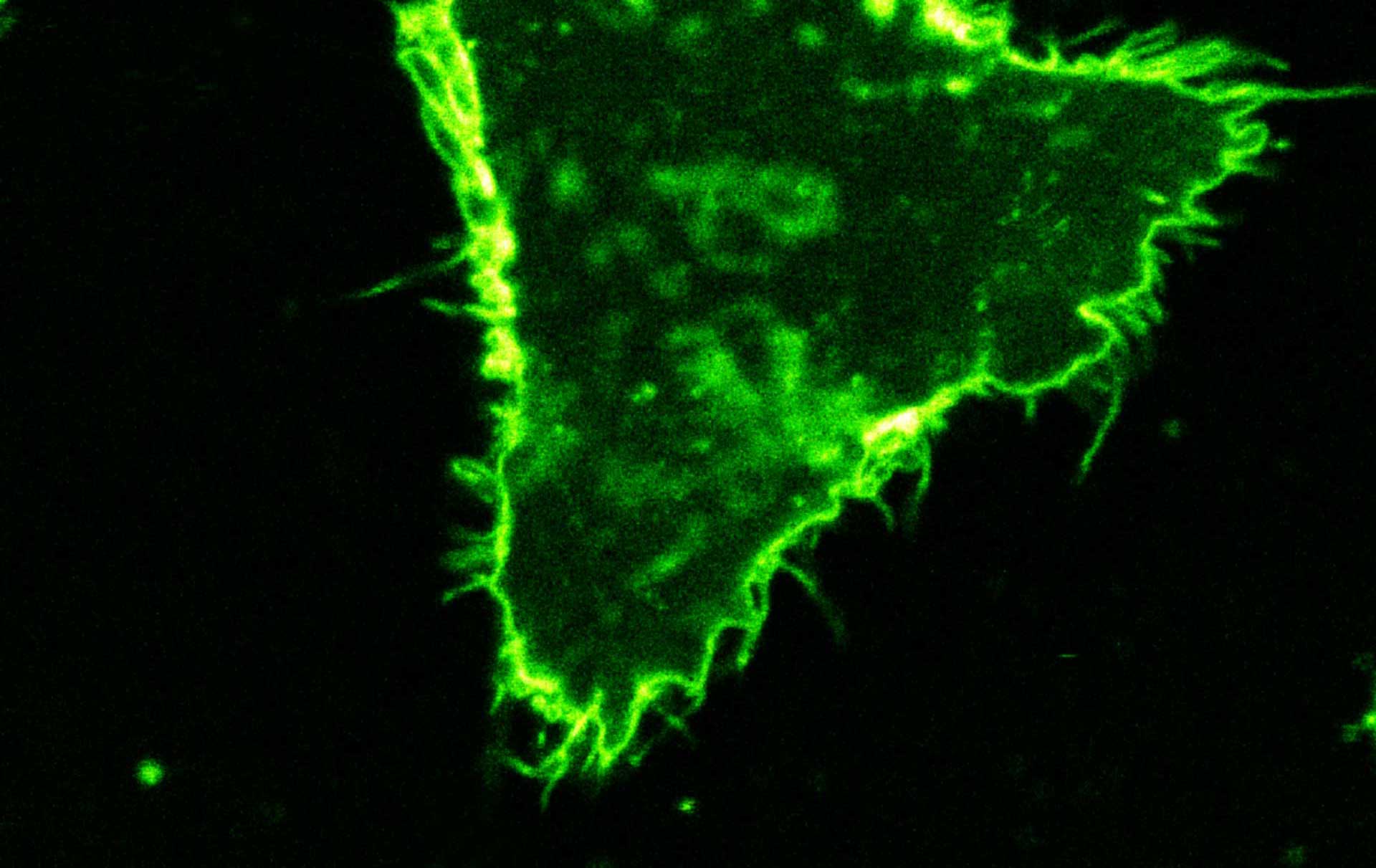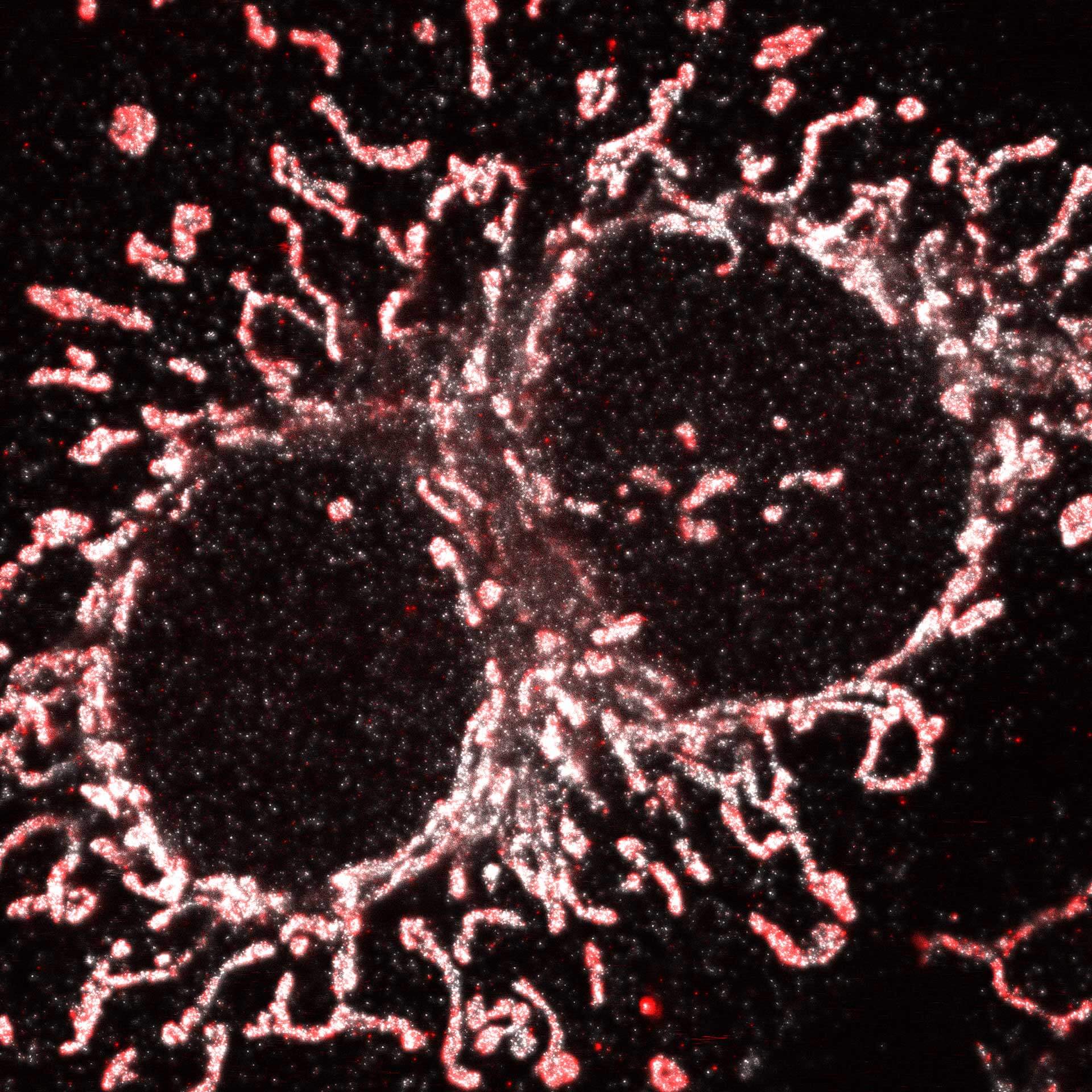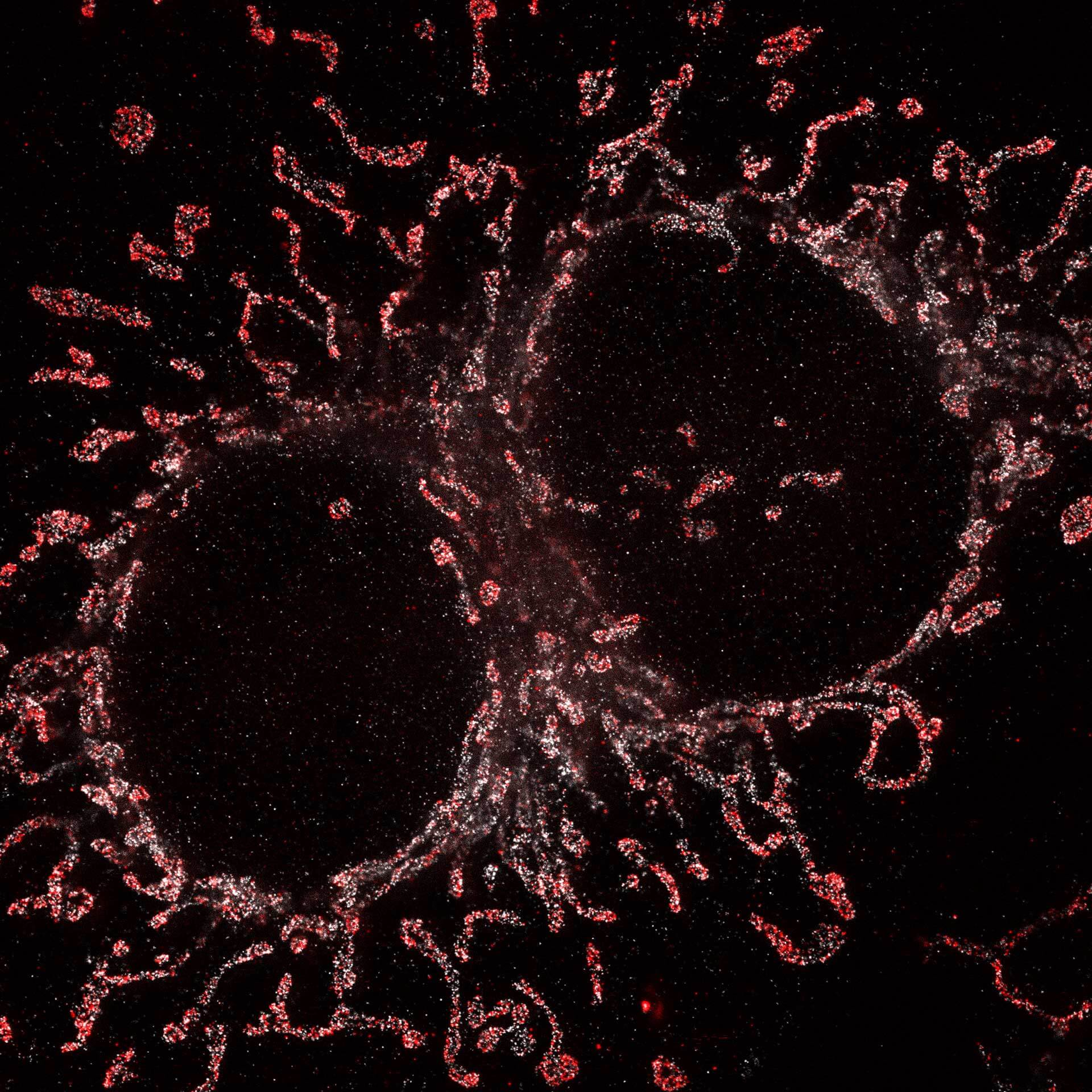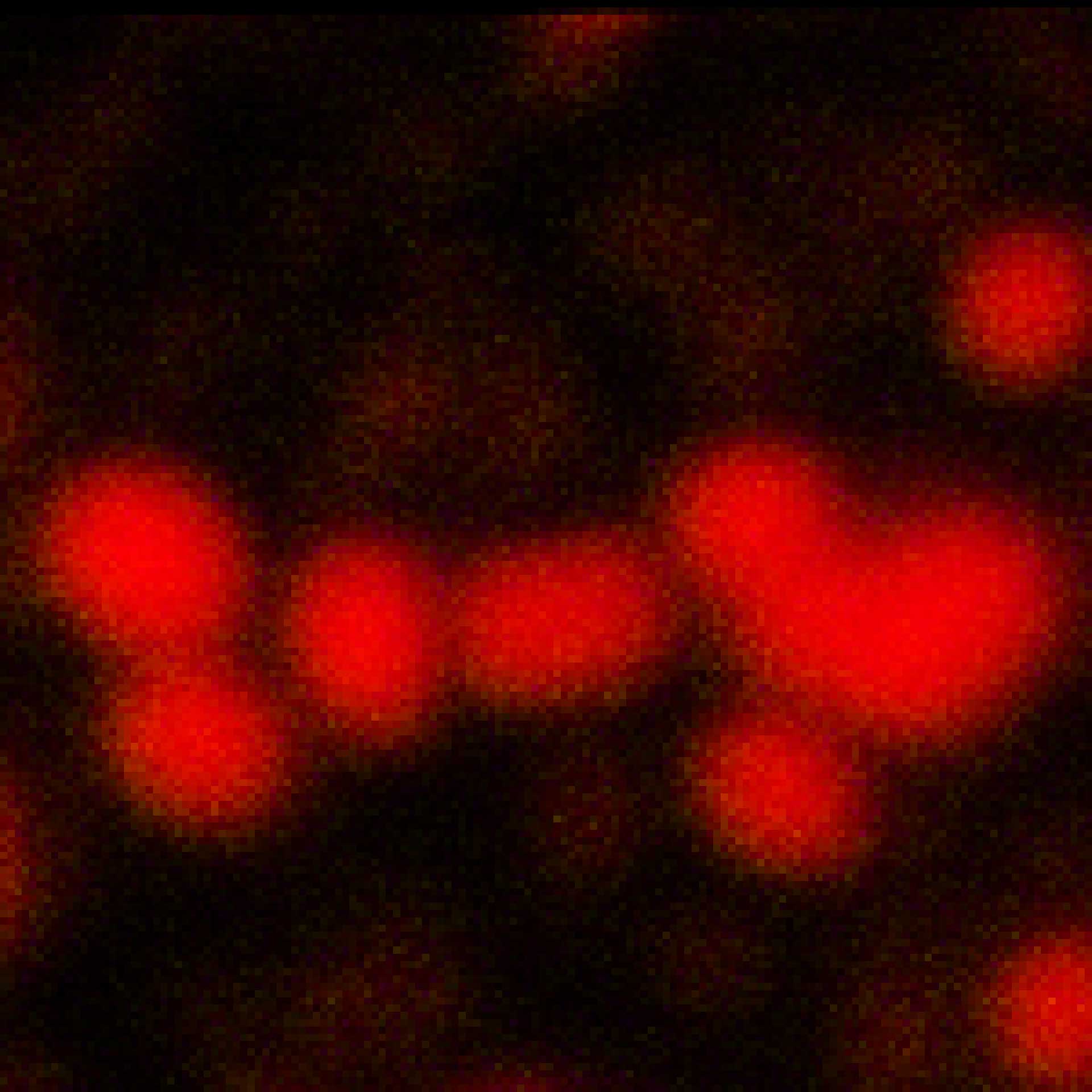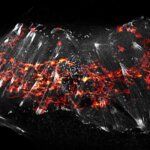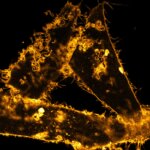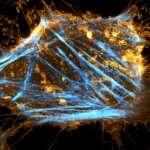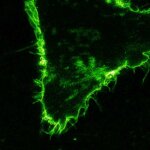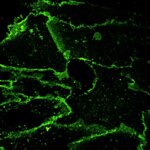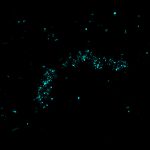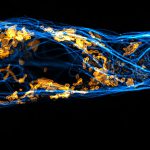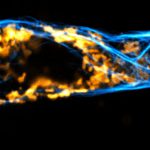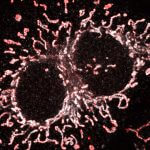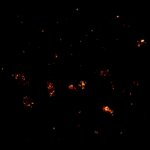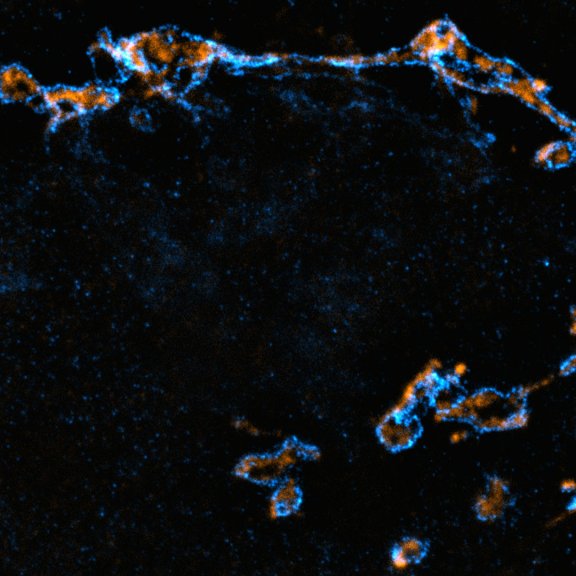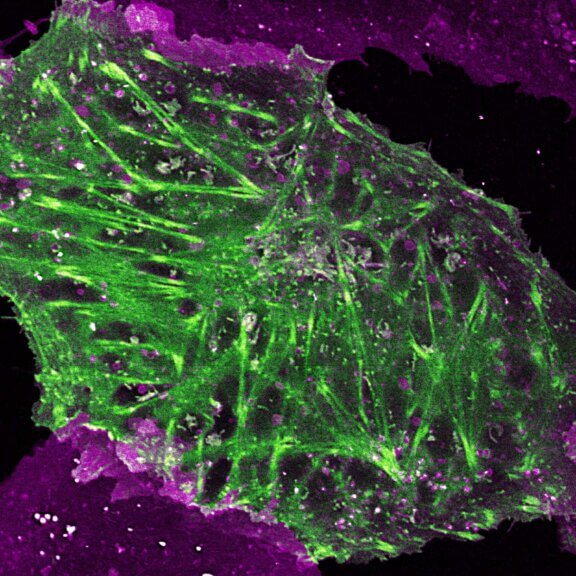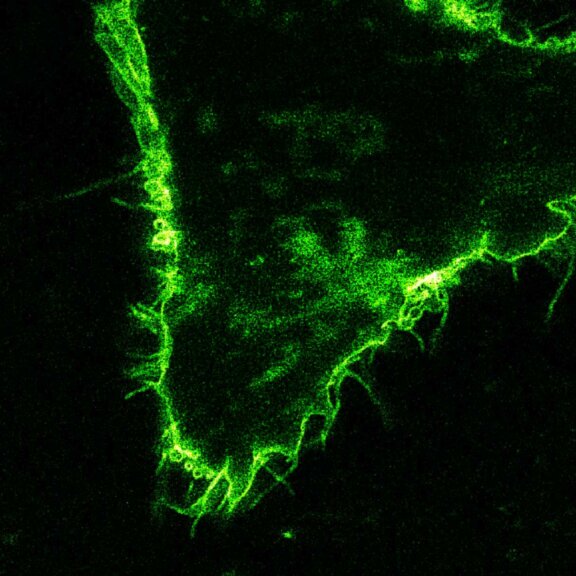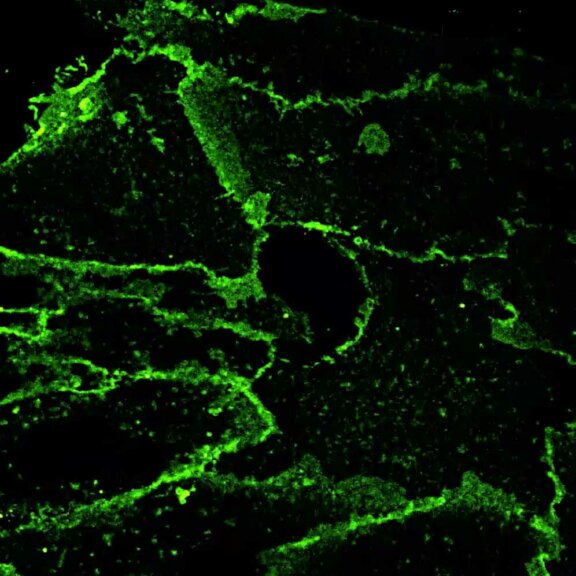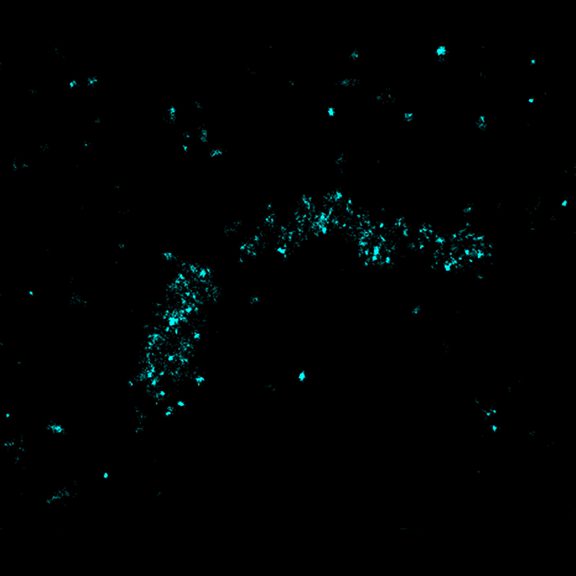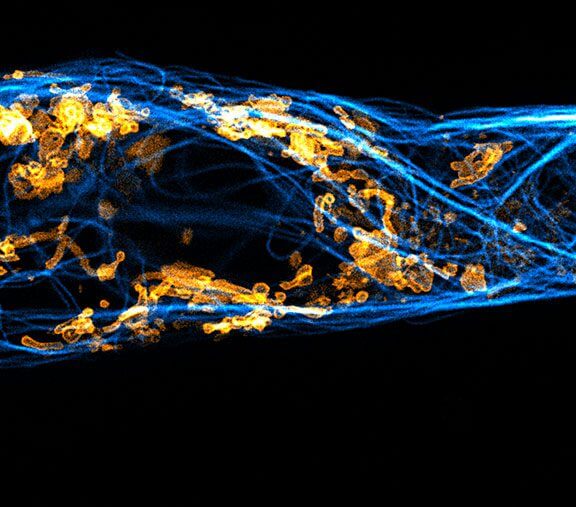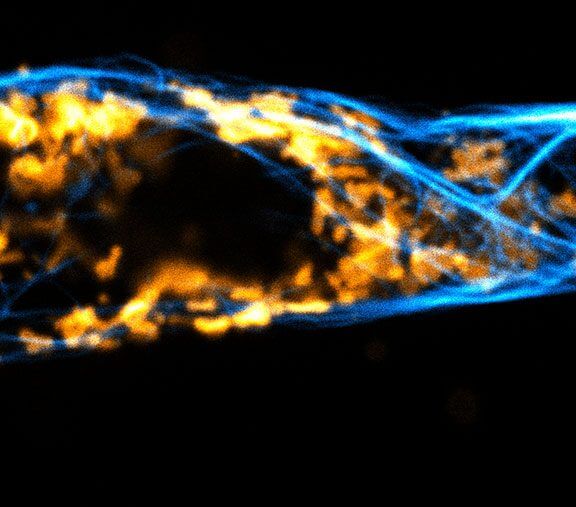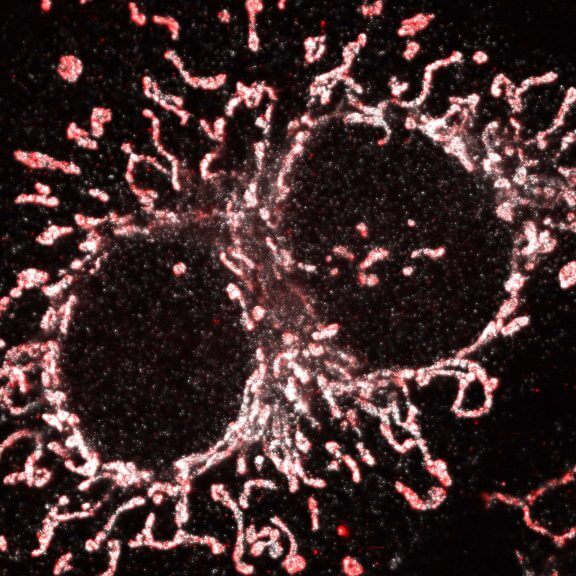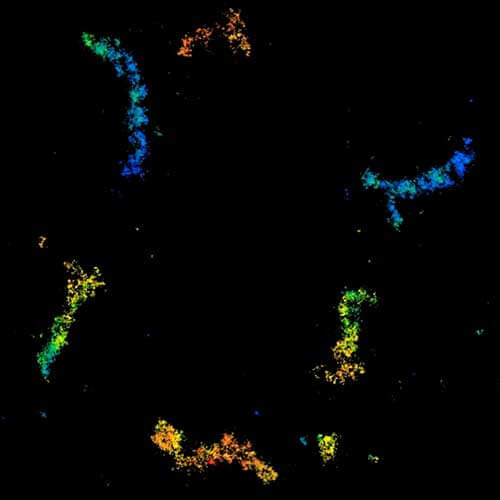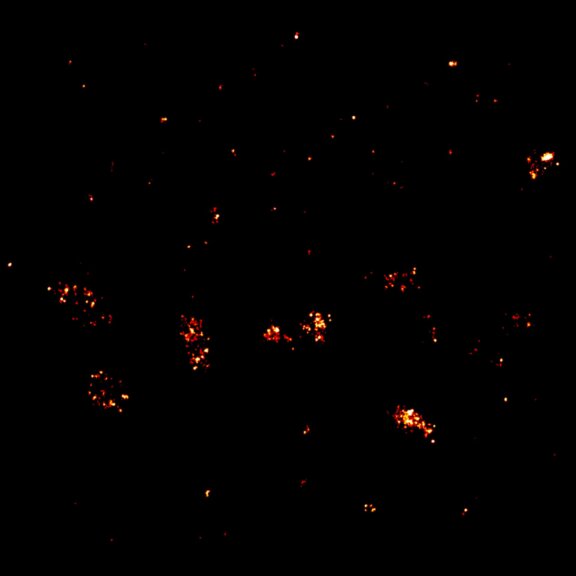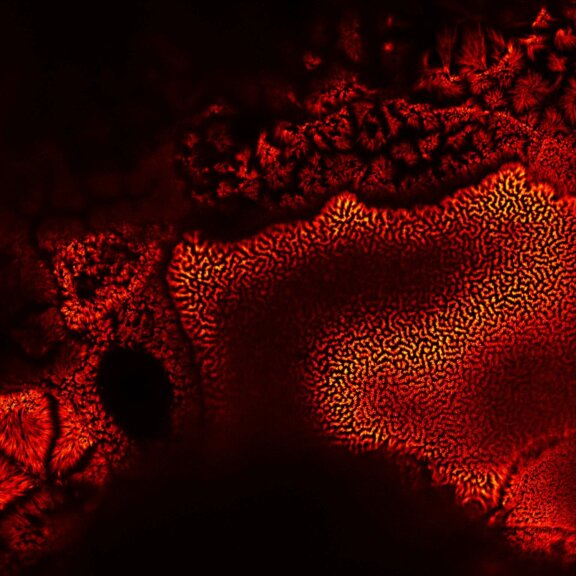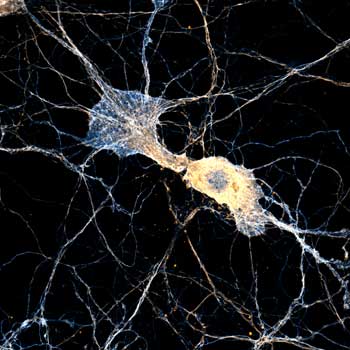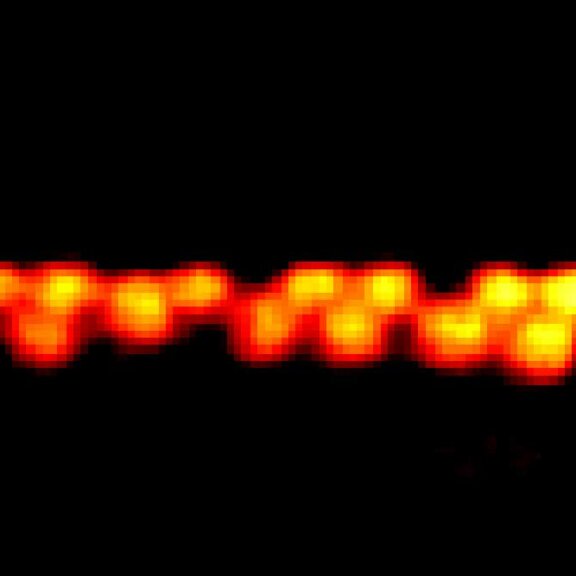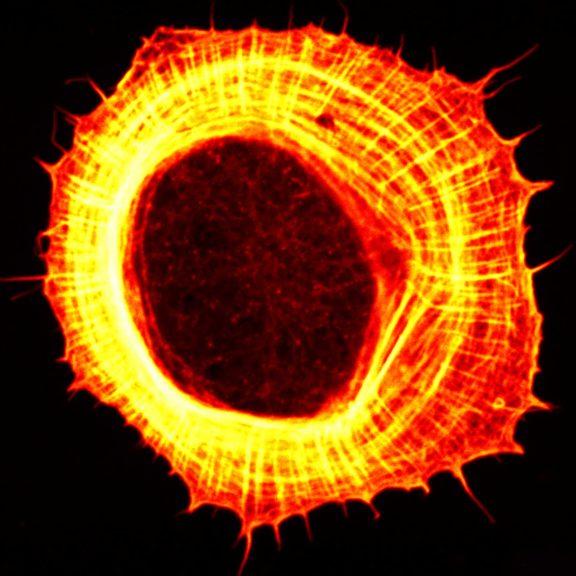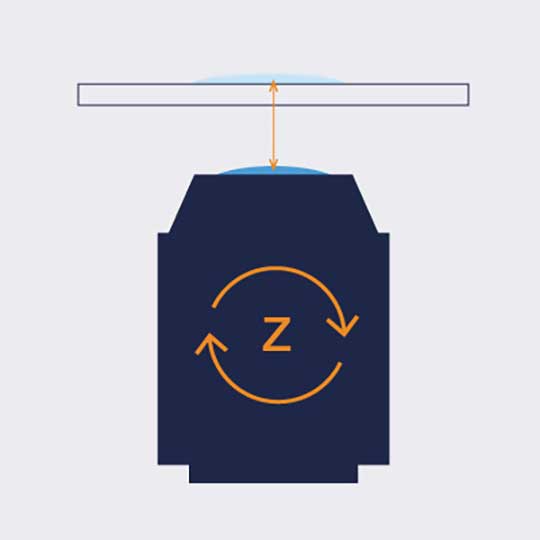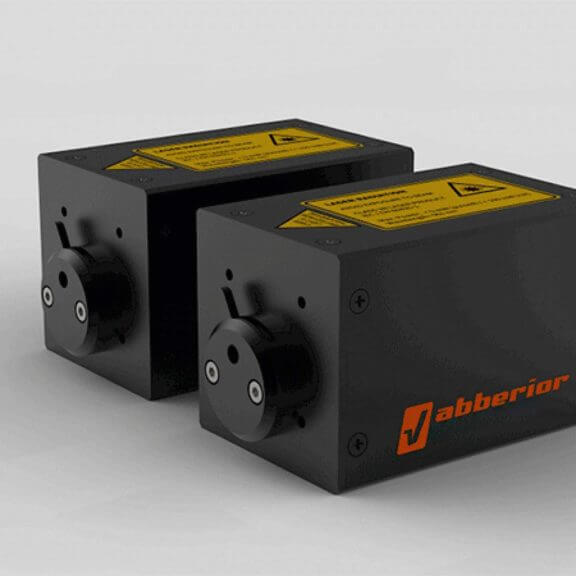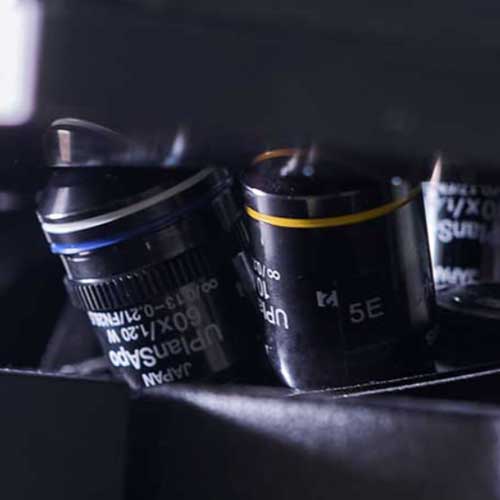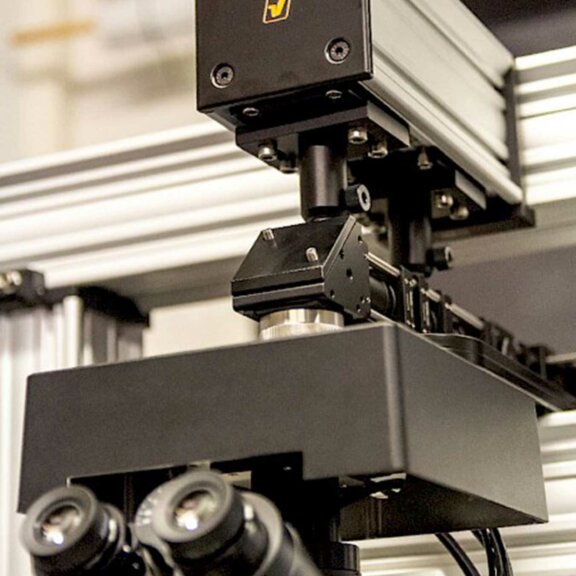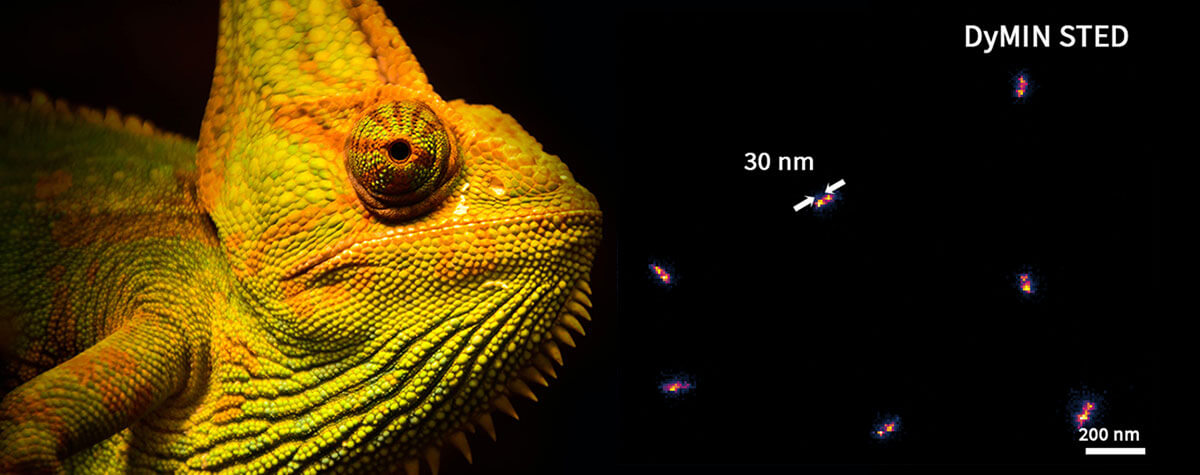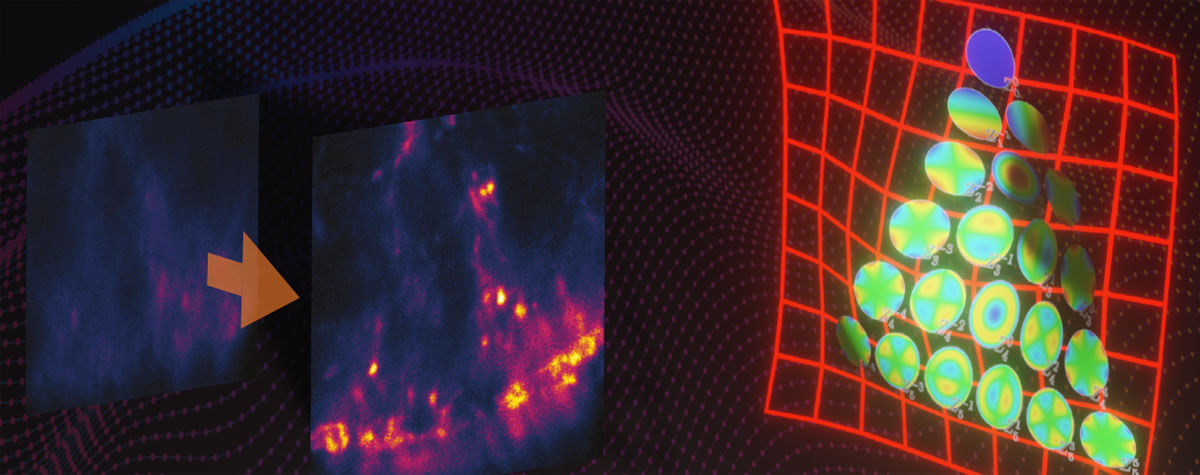Zooming in on the thin line – Membrane biology
NEWS
RAYSHAPE your image!
Watch Recording: Webinar on RAYSHAPE dynamic aberration correction
Observe motor proteins stepping along in living cells with MINFLUX
Spektrum interview with Nobel Laureate Stefan W. Hell about STED, MINFLUX and PALM/STORM.
EMBL Imaging Centre & abberior Instruments foster intense collaboration
Article in Physics Today about MINFLUX and tracking kinesin.
Membrane biology deals with the composition, dynamics, and adaptation of membranes and membranous compartments. These membranes are complex three-dimensional systems mainly composed of lipids and proteins, and allow life to exist in the first place by separating the inside of cells from the outside and by controlling which molecules and substances enter and leave. Besides artificial membrane systems in various compositions and layouts, cultured cells are model systems for membrane sciences. Membrane biology intersects with other biological research areas, most importantly biophysics, structural biology, neurobiology, and physiology.
Light microscopy is a central tool to visualize membranes. And since membranes are highly dynamic systems – they respond to physical forces, facilitate selective transport, provide anchor sites for proteins and other biomolecules, and much more – live cell imaging is of great importance.
No matter what membrane process you are studying – abberior can provide the ideal equipment for your imaging experiment. With us, you will find the ideal dye, a suitable and high-performing microscope system, and the matching technical modules for your purpose; all with the aim of recording the best possible data while treating the sample with care.
Talk to a scientist >Imaging biological boundaries
Two-color STED image of a living cell expressing actin K118TAG incorporating TCO*A labeled with abberior LIVE 590 click (green). The plasma membrane is highlighted with STAR RED membrane (magenta).
Test your sample >The borders within
Besides forming the outer boundary of the cell, lipid bilayers perform pivotal tasks within cells by defining sub-cellular compartments such as organelles, and regulating diffusion and transport. With the right fluorescent dyes, also these inner membranes can be visualized under the microscope, even in living cells. You may find some examples in our gallery.
Live from the border
abberior offers microscopes ideally suited for extended live cell imaging sessions in confocal or STED mode. MINFLUX even facilitates live intracellular molecule tracking with unprecedented spatial and temporal resolution. The 3D MINFLUX image you see shows a staining for the peroxisomal membrane protein PMP70 labeled with abberior FLUX 647 in fixed mammalian cells.
Get a demo >MINFLUX – unrivaled resolution and speed

The MINFLUX platform offers an unprecedented array of imaging possibilities and allows you to resolve structures as small as a molecule, along all three dimensions. This unmatched resolution capability combined with unprecedented speed reveals sample details never seen before helps to dissect fast and dynamic cellular processes in space and time. MINFLUX is the world’s most powerful fluorescence microscope. Details >
INFINITY – forever cutting edge

The INFINITY platform is the most customizable platform for all things microscopy and may be adapted to your particular demands in membrane imaging. INFINITY is always up to the challenge. Just tell us what you need and we will build you a customized, continuously upgradable system specialized for your research. Details >
MIRAVA POLYSCOPE – one for all and all for one

abberior’s MIRAVA® is the first true POLYSCOPE®. Every resolution – from millimeters down to 3 nm – combined in a singularly unique system. MIRAVA unites four microscopy technologies to cover an unprecedented resolution spectrum, extending over several orders of magnitude from diffraction-limited imaging all the way to true molecular resolution. Our LiGHTBOX software allows beginners to intuitively arrive at a top-notch image within three clicks, while also giving experts full control over the instrument. Details >
STEDYCON 2 – confocal, STED, lifetime… WOW!

The STEDYCON upgrades your existing widefield microscope to a confocal, STED, and lifetime imaging machine with a resolution down to 30 nm. All that’s required is a free camera port and a good objective lens. With its super-intuitive user interface, the STEDYCON provides an intelligent microscope platform that enables everyone to acquire superb superresolution images after only minutes of training. Define your live cell experiment and enjoy fine imaging at the push of a button! Details >
Cutting-edge tools
for the borders within
Every one of our modules adds another superpower to your microscope. Live cell imaging, for example, is facilitated by pulsed STED lasers and FLEXPOSURE adaptive illumination. They limit the light shone onto the sample in time (pulsed STED) and space (FLEXPOSURE). Shown is a two-color STED image of a living cell expressing actinK118TAG incorporating TCO*A labeled with abberior LIVE 550 click (gray). SNAP-tag® in an outer mitochondrial membrane protein is visualized with LIVE 610 SNAP (red).
Ask for detailed information >Choose a superpower for your experiment – our modules
Every MINFLUX, INFINITY, and FACILITY microscope from abberior can be equipped with different modules, powerful functional units that expand the system’s core functionality to reach new imaging heights. You may, for instance, use TIMEBOW lifetime imaging to separate and remove the autofluorescence of lipofuscin from images. Your deep tissue images will be crisp and clear from top to bottom thanks to RAYSHAPE aberration correction with a deformable mirror. FLEXPOSURE adaptive illumination puts light only where it has an effect and may reduce the light burden by orders of magnitude, facilitating extended live cell imaging and volume scans without bleaching or phototoxic effects. Our modules can do all of this and even more! And if you can’t find what you need on our website, get in touch with us, and we’ll develop it for you.
MATRIX Detector
Many eyes see more than one. The MATRIX detector drastically improves signal-to-background ratio, resolution, and dynamic range.
TIMEBOW Imaging
TIMEBOW lifetime imaging for stunning results at confocal and STED super-resolution.
FLEXPOSURE Illumination
Brings down the light dose on your sample and lables dramatically. Key ingredient for volume and live-cell superresolution.
RAYSHAPE Mirror
Dynamic aberration correction with a deformable mirror over about 200 µm z-range. 140 digital actuators adjust the mirror surface within milliseconds.
Custom Solutions
We offer solutions for even the most challenging applications. Everything that can be done, we will do.
Broaden your knowledge
of microscopes, dyes, and superresolution
What you might think are two angry looking fly eyes is actually a STED image of two mammalian cells stained against markers in the inner (gray, abberior STAR ORANGE) and outer (red, STAR RED) mitochondrial membrane. Do you actually know how STED microscopy achieves such superresolution? What does it have to do with a donut? How may challenges in fluorescence microscopy like aberrations or photobleaching be overcome? Our knowledge base is your chance to close any gaps in your expertise in fluorescence microscopy expertise you might have!
Tell me more >How the donut changed the world

For over a century, we stood at the edge of microscope resolution and cursed the inexorable blur of diffracted light. Instruments improved, but the fog never lifted. Then, one man stopped trying to control how light behaves. Armed with a donut-shaped laser beam, he instead commanded where it shines and untethered resolution forever. Details >
Fluorescent labeling strategies have become more and more sophisticated and offer ever-new options to improve microscopic imaging. Among the latest are exchangeable HaloTag ligands that put an end to photobleaching for good. Details >
Today’s high-end fluorescence microscopy is unthinkable without lasers. Reason enough to take a closer look at these sophisticated light sources. Details >
Every technique that allows to observe cells is more or less invasive and fluorescence microscopy is no exception. Many imaging situations profit from a reduction in light dose as provided by FLEXPOSURE adaptive illumination. Details >
Ideal imaging conditions are often compromised by imperfections in the optical path. These can severely compromise a microscope’s performance, unless they are eliminated by RAYSHAPE’s deformable mirror. Details >
Superresolution for biology: when size, time, and context matter

The spatial resolution achievable with today’s light microscopes has unveiled life at the scale of individual molecules. Size is no longer a barrier to seeing biology at the most fundamental level. But life is not static. It emerges from movement and change. How do superresolution technologies hold up to the challenges of documenting dynamic biological mechanisms? Details >












